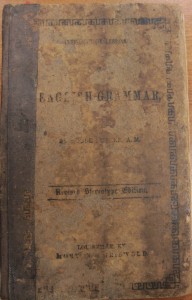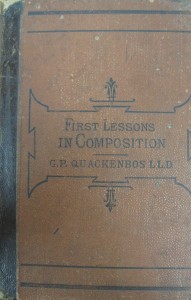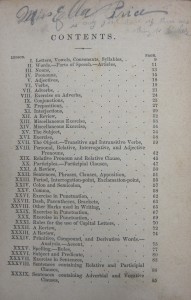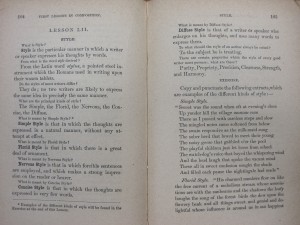As the 19th century continued, grammar textbooks began to emphasize the practical teaching of composition, in addition to the formal structures of grammar. Goold Brown’s The Institutes of English Grammar includes many pages of “Exercises” with which students may practice the skills that they have learned.
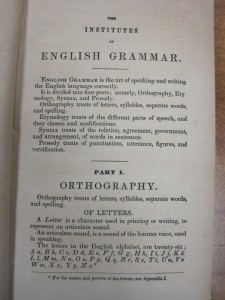
Goold Brown. The Institutes of English Grammar. New York: Samuel S. and William Wood, 1832. Second Edition.
Introductory Lessons in English Grammar by Noble Butler likewise emphasizes practical exercises, and also includes a section on “Common Errors in Speech” which provides fascinating insight into 19th-century speech: both common American English usage and scholarly standards of correctness. In the example below, Butler identifies the interjection “Oh!” as the proper way to signify pain and surprise in writing; in his view, “Ouch!” is a vulgar error.
Noble Butler. Introductory Lessons in English Grammar. Louisville: Morton and Griswold, 1846. First Edition.
The way in which stylistic preferences change over time is also evident in First Lessons in Composition by George Payn Quackenbos. Quackenbos defines the “Simple Style” as “that in which the thoughts are expressed in a natural manner, without any attempt at effect” and then cites as an example a passage from “The Deserted Village” by Oliver Goldsmith – a finely-wrought poem in rhymed iambic pentameter, which few modern readers would regard as “natural.”
P. Quackenbos. First Lessons in Composition. New York: D. Appleton and Company, 1851. First Edition.
All images are from the W. S. Hoole Special Collections Library and are not eligible for duplication, publication or sharing online without permission of the W. S. Hoole Special Collections Library. Please contact us at archives@bama.ua.edu or call 205.348.0500 with any questions. Thank you.

